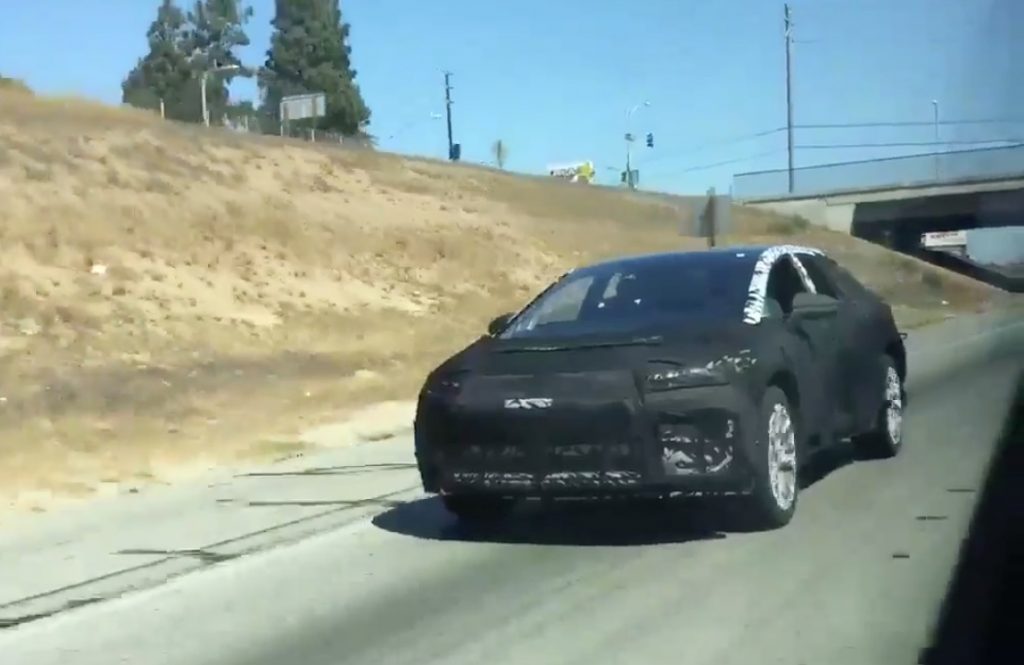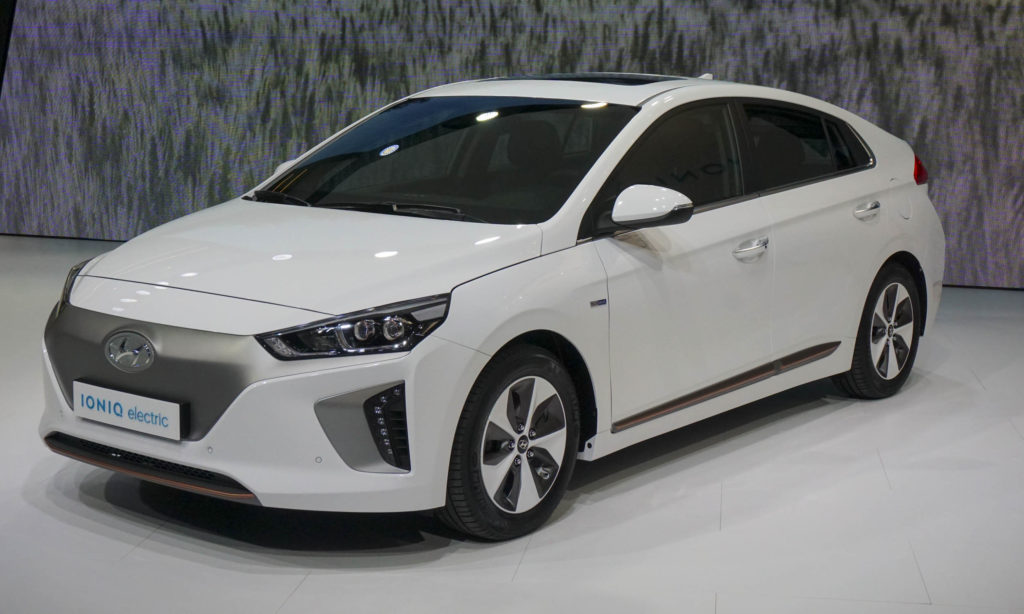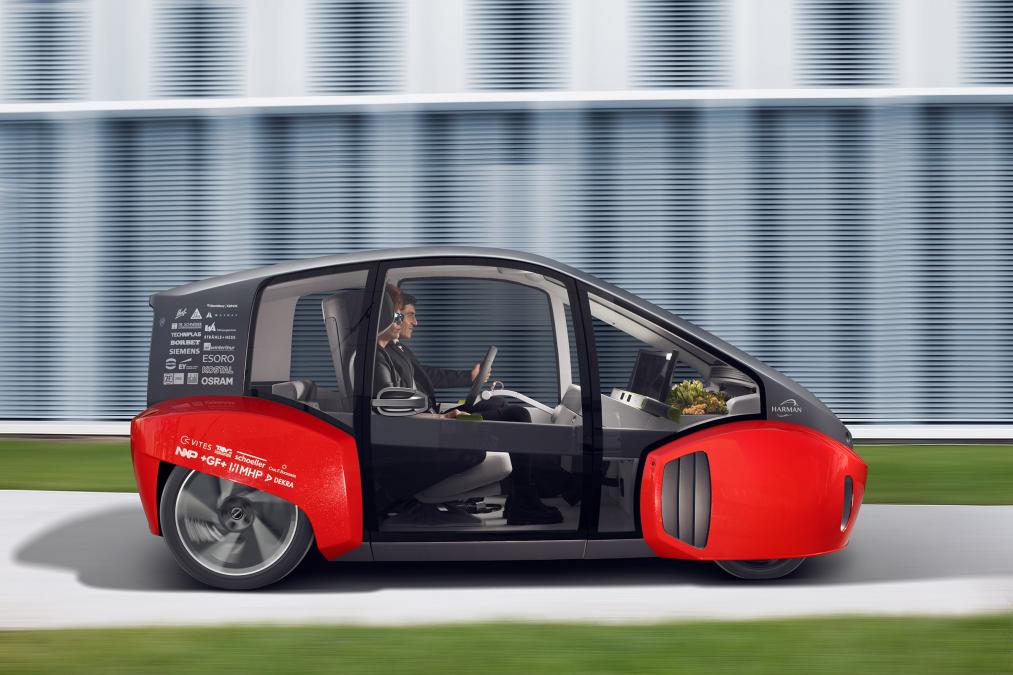News
Automakers will focus on self-driving technology at CES 2017
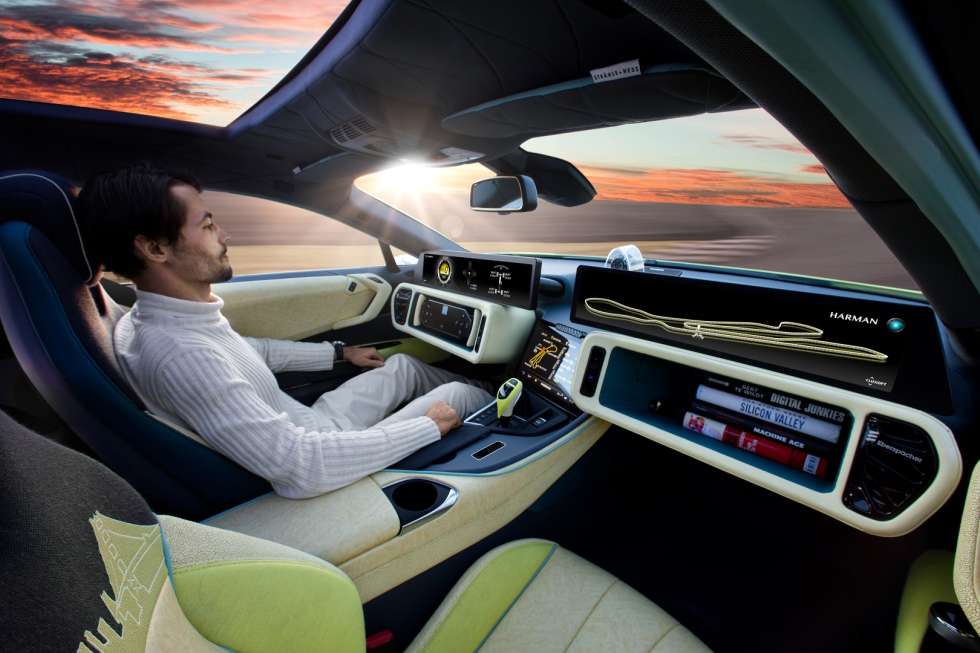
The 2017 Consumer Electronics Show in Las Vegas opens to the public on January 5 but will be preceded by press and preview days on January 3 and 4. This year’s show will span across 2.5 million square feet of floor space spread across multiple venues and feature 3,800 exhibitors.
“One of the big themes is going to be connectivity,” Jeff Joseph, senior vice president for communications and strategic relationships at the Consumer Technology Association, which hosts CES. “For example, Internet of Things, vehicle-to-vehicle communication, voice-activated communication with things like Alexa and Google Home and higher-value content – 4K-produced content that you can move from device to device.”
Faraday Future
In the past few years, more and more car companies and automotive suppliers have used CES to showcase their technological prowess, particularly in the area of self-driving cars. Faraday Future says it will reveal its first production car via a live stream beginning at 6:00 pm on January 3. The all electric vehicle appears to be a crossover SUV based on teaser videos the company has released ahead of the show.
Hyundai Ioniq
Hyundai says it will be providing show goers rides in its new Ioniq equipped with autonomous driving technology. In a preview earlier this year, C/Net RoadShow reporter Antuan Goodwin found the self driving Ioniq competent if a little boring. The car never exceeds the speed limit, for instance, and deals with pedestrians and turns within city limits with painfully slow precision.
Chrysler Pacifica
Chrysler is expected to introduce a battery electric version of its Pacifica minivan at CES 2017. The car is not expected to be available for sale before 2018 and little is known at this time about battery size, range, or other specifications. Chrysler has just started selling a plug-in hybrid version of the Pacifica in the US. 100 of those cars have been modified at a separate facility in Detroit to use Google’s self driving technology. Google has recently announced that it is no longer considering manufacturing its own self-driving car.
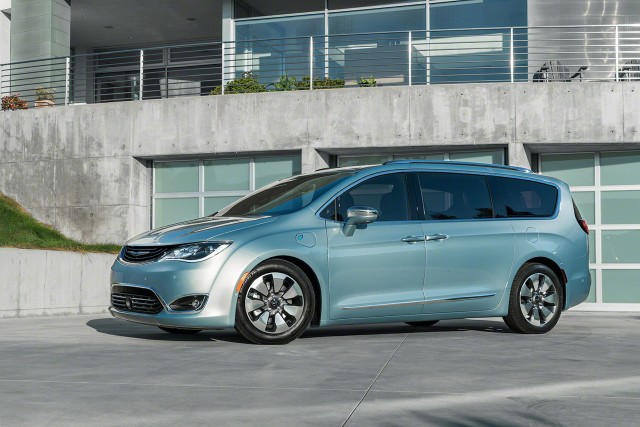
Honda NeuV
Honda will bring a “box on wheels” concept electric car to the Las Vegas show. Called the NeuV, the car can recognize the occupants’ mood and adjust lighting, visual displays, and driving characteristics to match. It will also showcase vehicle to vehicle communication systems designed to speed the flow of traffic in congested urban areas.
https://www.youtube.com/watch?v=z-XMA6YAh5c
Rinspeed
Not to be outdone in the goofiness department, Rinspeed will present its highly unusual and totally unique Oasis concept. The car is intended to answer the question, “What will drivers and passengers do with their time when self driving cars become the norm?” One answer, says Rinspeed, is an onboard garden that occupants can tend to while under way.
MobilEye
MobilEye, Tesla’s former partner for autonomous driving systems, has linked up with Delphi, a major component supplier to the automotive industry, to create a self driving platform that will be marketed to various car makers. The two companies will offer show visitors a 6.3 mile long test drive of their Centralized Sensing Localization and Planning (CSLP) automated driving system. It won’t be production ready until 2019, but the two companies insist it is “the first turnkey, fully integrated automated driving solution with an industry-leading perception system and computing platform.”
https://vimeo.com/193388153
Keynote speakers at CES 2017 will include Nvidia CEO Jen-Hsun Huang, who will talk about “the latest in artificial intelligence, self-driving cars, VR, and gaming.” Carlos Ghosn, CEO of Renault-Nissan, is also scheduled to give a keynote address.
CES is about more than automobiles. New advances in televisions, smartphones, and personal assistants like Google Home and Amazon Echo will be featured as well as advances in gaming and virtual reality technology. No one could see, touch, and experience everything that every exhibitor will bring to the show.
We will attempt to keep you informed about new technologies that will apply to the automotive and mobility industries, beginning with the first press conferences next Tuesday, January 3. Like us on Facebook and get a behind the scenes look from CES 2017.

News
Tesla Insurance officially expands to new U.S. state
Tesla’s in-house Insurance program first launched back in late 2019, offering a new way to insure the vehicles that was potentially less expensive and could alleviate a lot of the issues people had with claims, as the company could assess and repair the damage itself.
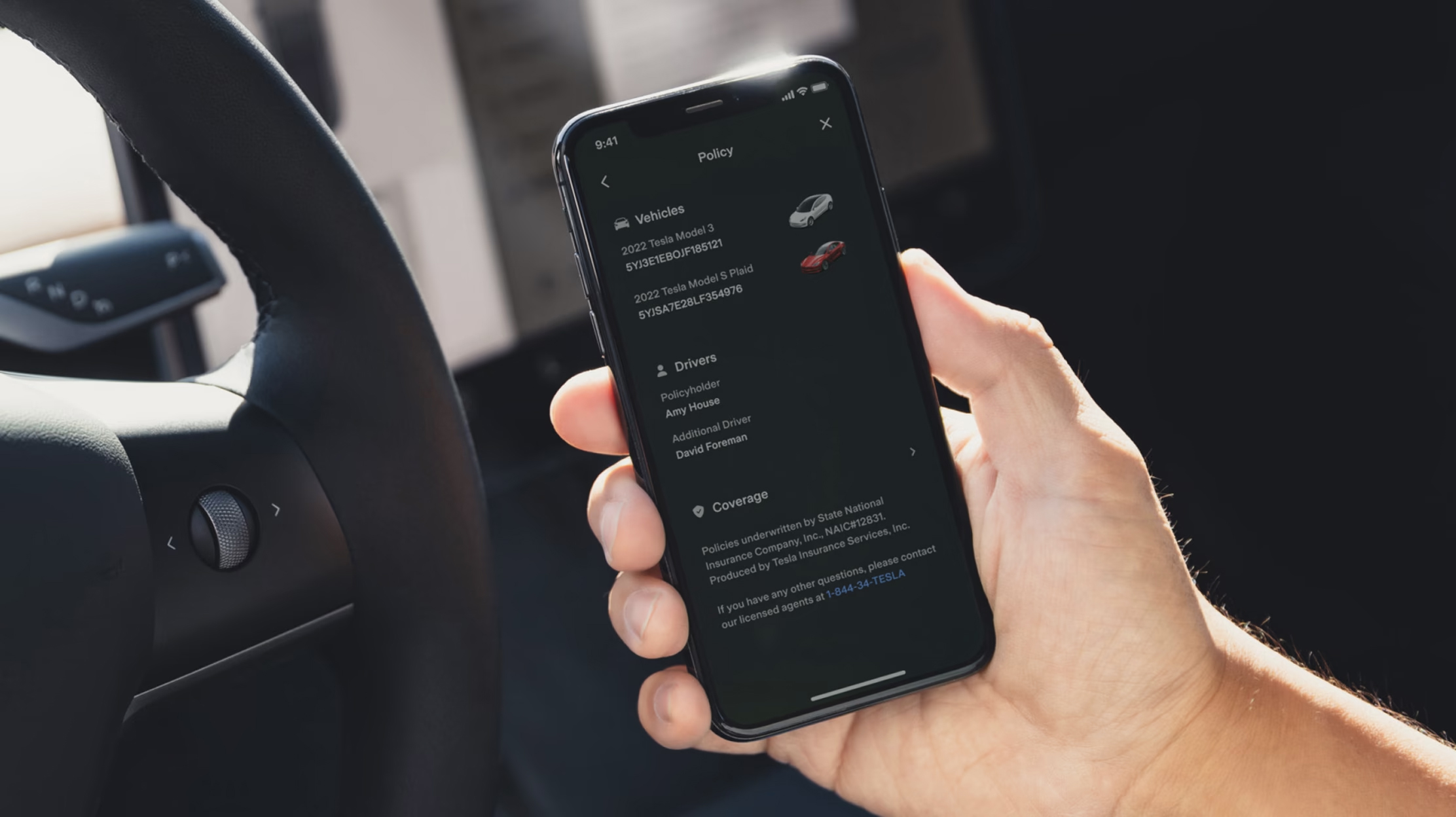
Tesla Insurance has officially expanded to a new U.S. state, its thirteenth since its launch in 2019.
Tesla has confirmed that its in-house Insurance program has officially made its way to Florida, just two months after the company filed to update its Private Passenger Auto program in the state. It had tried to offer its insurance program to drivers in the state back in 2022, but its launch did not happen.
Instead, Tesla refiled the paperwork back in mid-October, which essentially was the move toward initiating the offering this month.
BREAKING: Tesla Insurance has just officially launched in Florida.
This is the first new state to receive @Tesla Insurance in more than 3 years. In total, Tesla insurance is now available in 13 U.S. states (map in thread below of all the states).
Tesla Insurance in Florida uses… pic.twitter.com/bDwh1IV6gD
— Sawyer Merritt (@SawyerMerritt) December 17, 2025
Tesla’s in-house Insurance program first launched back in late 2019, offering a new way to insure the vehicles that was potentially less expensive and could alleviate a lot of the issues people had with claims, as the company could assess and repair the damage itself.
It has expanded to new states since 2019, but Florida presents a particularly interesting challenge for Tesla, as the company’s entry into the state is particularly noteworthy given its unique insurance landscape, characterized by high premiums due to frequent natural disasters, dense traffic, and a no-fault system.
Annual average premiums for Florida drivers hover around $4,000 per year, well above the national average. Tesla’s insurance program could disrupt this, especially for EV enthusiasts. The state’s growing EV adoption, fueled by incentives and infrastructure development, aligns perfectly with Tesla’s ecosystem.
Moreover, there are more ways to have cars repaired, and features like comprehensive coverage for battery damage and roadside assistance tailored to EVs address those common painpoints that owners have.
However, there are some challenges that still remain. Florida’s susceptibility to hurricanes raises questions about how Tesla will handle claims during disasters.
Looking ahead, Tesla’s expansion of its insurance program signals the company’s ambition to continue vertically integrating its services, including coverage of its vehicles. Reducing dependency on third-party insurers only makes things simpler for the company’s automotive division, as well as for its customers.
News
Tesla Full Self-Driving gets sparkling review from South Korean politician
“Having already ridden in an unmanned robotaxi, the novelty wasn’t as strong for me, but it drives just as well as most people do. It already feels like a completed technology, which gives me a lot to think about.”
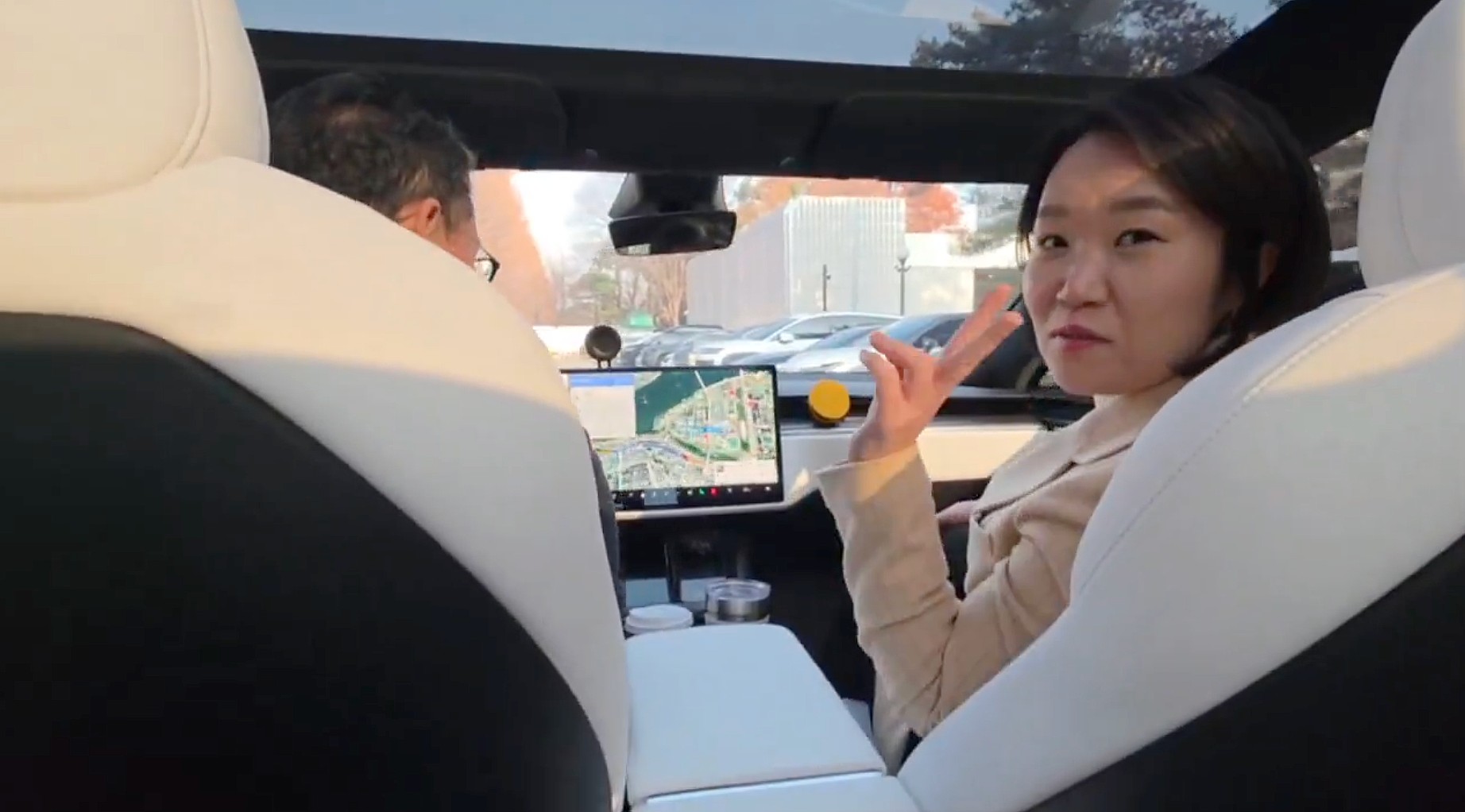
Tesla Full Self-Driving got its first sparkling review from South Korean politician Lee So-young, a member of the country’s National Assembly, earlier this week.
Lee is a member of the Strategy and Finance Committee in South Korea and is a proponent of sustainable technologies and their applications in both residential and commercial settings. For the first time, Lee was able to utilize Tesla’s Full Self-Driving technology as it launched in the country in late November.
Her thoughts on the suite were complimentary to the suite, stating that “it drives just as well as most people do,” and that “it already feels like a completed technology.”
드디어 오늘, 서울에서 테슬라 FSD 체험 했습니다.
JiDal Papa님의 모델S 협찬에 힘입어^^ 파파님 정말 감사합니다.
국회 -> 망원시장 -> 홍익대 -> 국회 복귀 코스였고요.
이미 무인 로보택시를 타봐서 그런지 신기함은
덜했지만, 웬만한 사람만큼 운전을 잘하네요.이미 완성된 기술이라고… pic.twitter.com/8pAidHBpRG
— 이소영 국회의원 (Soyoung Lee) (@im_soyounglee) December 17, 2025
Her translated post says:
“Finally, today I got to experience Tesla FSD in Seoul. Thanks to the Model S sponsored by JiDal Papa^^, I’m truly grateful to Papa. The route was from the National Assembly -> Mangwon Market -> Hongik University -> back to the National Assembly. Having already ridden in an unmanned robotaxi, the novelty wasn’t as strong for me, but it drives just as well as most people do. It already feels like a completed technology, which gives me a lot to think about. Once it actually spreads into widespread use, I feel like our daily lives are going to change a lot. Even I, with my license gathering dust in a drawer, don’t see much reason to learn to drive a manual anymore.”
Tesla Full Self-Driving officially landed in South Korea in late November, with the initial launch being one of Tesla’s most recent, v14.1.4.
It marked the seventh country in which Tesla was able to enable the driver assistance suite, following the United States, Puerto Rico, Canada, China, Mexico, Australia, and New Zealand.
It is important to see politicians and figures in power try new technologies, especially ones that are widely popular in other regions of the world and could potentially revolutionize how people travel globally.
News
Tesla dispels reports of ‘sales suspension’ in California
“This was a “consumer protection” order about the use of the term “Autopilot” in a case where not one single customer came forward to say there’s a problem.
Sales in California will continue uninterrupted.”

Tesla has dispelled reports that it is facing a thirty-day sales suspension in California after the state’s Department of Motor Vehicles (DMV) issued a penalty to the company after a judge ruled it “misled consumers about its driver-assistance technology.”
On Tuesday, Bloomberg reported that the California DMV was planning to adopt the penalty but decided to put it on ice for ninety days, giving Tesla an opportunity to “come into compliance.”
Tesla enters interesting situation with Full Self-Driving in California
Tesla responded to the report on Tuesday evening, after it came out, stating that this was a “consumer protection” order that was brought up over its use of the term “Autopilot.”
The company said “not one single customer came forward to say there’s a problem,” yet a judge and the DMV determined it was, so they want to apply the penalty if Tesla doesn’t oblige.
However, Tesla said that its sales operations in California “will continue uninterrupted.”
It confirmed this in an X post on Tuesday night:
This was a “consumer protection” order about the use of the term “Autopilot” in a case where not one single customer came forward to say there’s a problem.
Sales in California will continue uninterrupted.
— Tesla North America (@tesla_na) December 17, 2025
The report and the decision by the DMV and Judge involved sparked outrage from the Tesla community, who stated that it should do its best to get out of California.
One X post said California “didn’t deserve” what Tesla had done for it in terms of employment, engineering, and innovation.
Tesla has used Autopilot and Full Self-Driving for years, but it did add the term “(Supervised)” to the end of the FSD suite earlier this year, potentially aiming to protect itself from instances like this one.
This is the first primary dispute over the terminology of Full Self-Driving, but it has undergone some scrutiny at the federal level, as some government officials have claimed the suite has “deceptive” naming. Previous Transportation Secretary Pete Buttigieg was vocally critical of the use of the name “Full Self-Driving,” as well as “Autopilot.”
